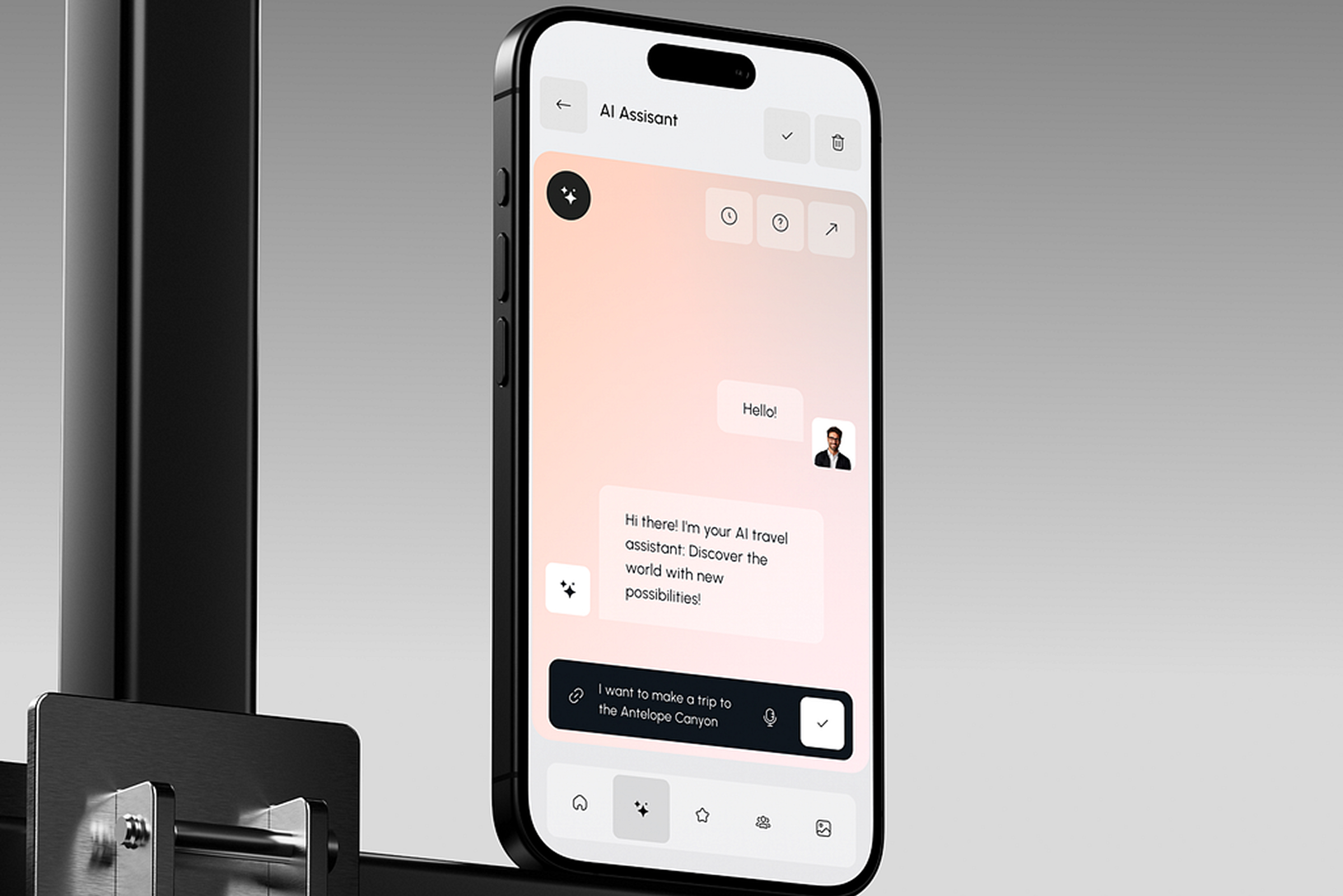
The Rise of AI in Design: What You Need to Know

AI Travel Assistant Mobile App
All things AI
The overtake of AI
Artificial Intelligence (AI) is rapidly changing many industries and design is no exception. Tools powered by AI are becoming more common, offering new ways to create, optimize and manage design projects.
For design agencies and creative directors, understanding this emerging tech is no longer optional; it's essential. This article explores how AI in design is reshaping workflows, fostering design innovation and what agencies need to know to adapt and thrive now.
AI-powered design
- “
The integration of AI in graphic design presents both significant advantages and potential disadvantages for creative professionals. Let’s see the benefits:
Vitalii B.
UX Architect
Boost efficiency
by automating repetitive and time-consuming tasks. This includes generating multiple design variations, resizing images for various platforms, removing backgrounds and even suggesting color palettes or font pairings.
Such automation frees up designers' time, allowing them to focus on higher-level strategic thinking, client communication and truly creative problem-solving, which are areas where human intuition excels.Brainstorming partner
AI can also act as a powerful brainstorming partner, generating unique concepts or exploring design directions that might not have been considered otherwise, fostering design innovation. This can accelerate the initial ideation phase and lead to more diverse outputs, directly benefiting agency operations by speeding up project delivery and potentially improving client satisfaction.
- “
However, there are some notable disadvantages that need to be included:
Mari S.
CX Designer
AI in graphic design
Job displacement
A primary concern is the potential for job displacement as AI takes over routine tasks, raising questions about the evolving role of designers. Furthermore, while AI can generate designs quickly, the output may sometimes lack genuine originality, emotional depth, or the nuanced "human touch" that resonates deeply with audiences.
Lack of creativity
AI models are trained on existing data, meaning their creations can sometimes appear generic or inadvertently perpetuate biases present in the training datasets. The initial investment in AI tools and the learning curve for designers to effectively use them can also be a barrier.
Real-world application
The real-world application of AI in graphic design is already widespread, offering practical solutions that impact various metrics.
Adobe Sensei, for instance, is a powerful AI framework integrated across Adobe products like Photoshop and Illustrator. Features such as Photoshop's Content-Aware Fill or Select Subject dramatically reduce manual editing time.
CRM - Task Automation SaaS
Previously, outlining complex objects or removing unwanted elements could take hours; now, AI accomplishes it in seconds with remarkable accuracy.
This leads to massive time savings for designers, allowing them to process more projects or dedicate more effort to creative refinement. While direct "traffic" metrics aren't applicable, the efficiency gains translate into faster project turnarounds and improved client satisfaction, boosting the agency's capacity for conversion and business growth.
AI in graphic design
Midjourney & Firefly
Another compelling example is generative AI tools like Midjourney or Adobe Firefly. These platforms can generate diverse visual concepts and images from simple text prompts. A creative director needing mood board visuals or initial concept sketches can input keywords and receive dozens of unique images in minutes.
Lirensi CRM - Real Estate Mobile App
This rapid ideation capability significantly reduces the time spent on initial visual research and brainstorming. For an agency, this means faster proposal development and increased pitch conversion rates because they can present richer visual ideas earlier.
Some agencies report
30-50% - reduced early concept generation
While the AI-generated images often require human refinement to align with brand specifics, the efficiency of the initial output enhances designer productivity and expands creative possibilities. This directly impacts agency operations by streamlining workflows and allowing more focus on the strategic aspects of design innovation.
RDL & AI
The rapid growth of AI in design presents both exciting opportunities and new challenges for creative businesses.
At RDL, we are proactively integrating emerging tech into our workflows to enhance our capabilities and deliver cutting-edge solutions for design innovation. We are committed to helping designers, agency leaders and innovators understand and leverage AI effectively.
Galaxon - AI Video Generator Dashboard
We utilize AI for automating repetitive tasks like image background removal and initial asset generation, which frees our designers to focus on complex problem-solving and deep creative strategy. We also employ AI to analyze trends and generate diverse design concepts, significantly speeding up the ideation phase of agency operations.
Our solutions are tailored to help clients explore the full potential of AI, from enhancing visual outputs and streamlining workflows to creating highly personalized user experiences.
- “
We ensure that our clients remain at the forefront of design innovation, boosting their efficiency and competitive edge in the market.
Stan D.
CIO
The integration of AI in graphic design represents a fundamental evolution in creative practice. As this powerful emerging tech continues to mature, design agencies that embrace its capabilities will gain significant advantages in efficiency, innovation and client delivery.
It’s an exciting time for designers and creative directors to explore how AI can augment human ingenuity, automate mundane tasks and unlock entirely new realms of visual expression.
The future belongs to those...
who view AI as a collaborative partner, driving progress and shaping the next wave of design innovation for lasting impact.
Shall we chat?
[email protected]Let’s

talk
Let’s

talk











